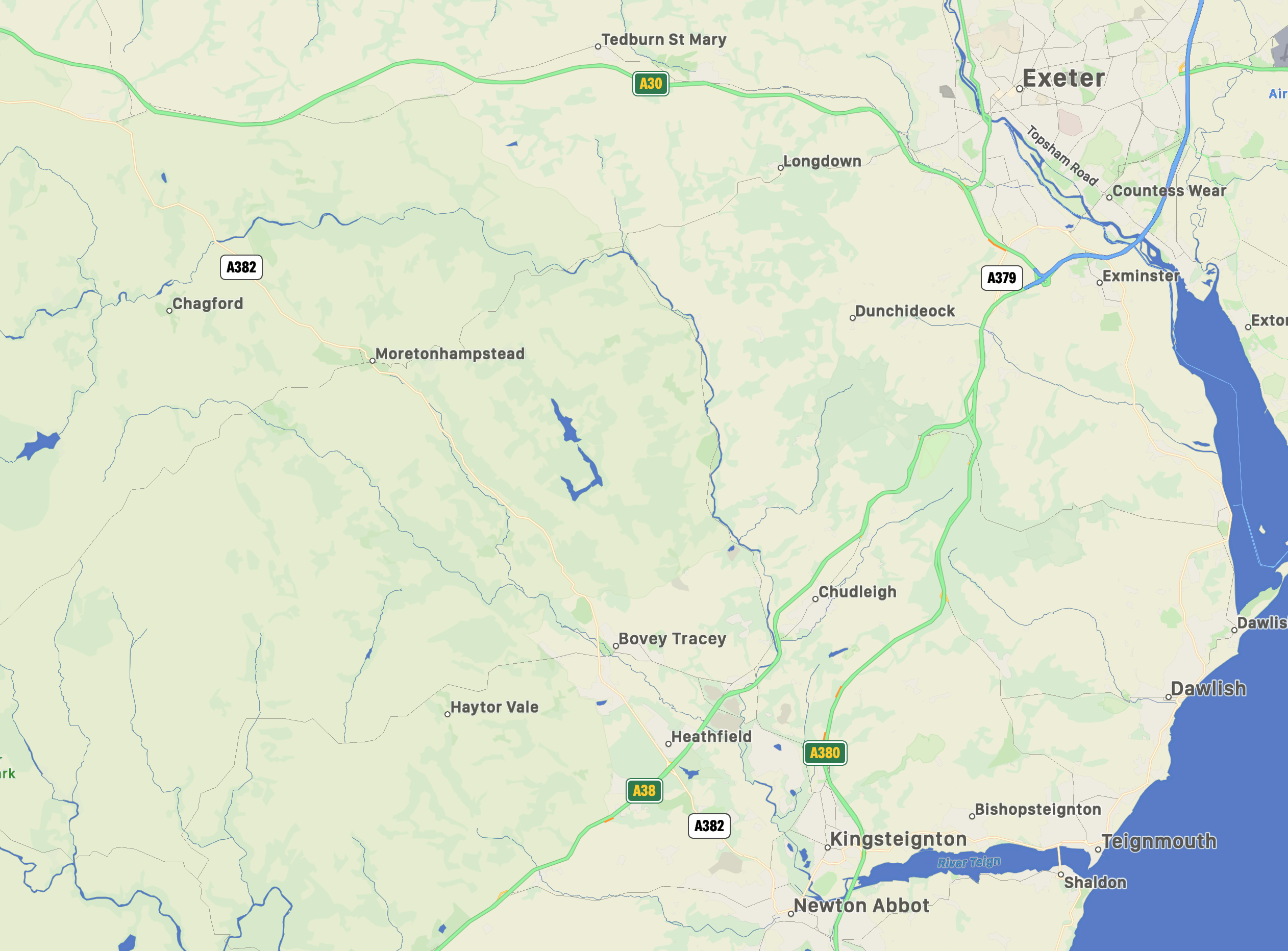The Teign Valley

The Teign Valley
Following the Norman conquest, various Norman lords and religious houses were granted land in the Teign Valley as reward for their loyalty to William, Duke of Normandy. All the valley villages have Domesday entries with the exception of Christow, although there is an entry for Canonteign with which Christow is historically linked. This lack of Domesday record indicates Christow was a very small settlement at that time.
After the Dissolution, the Teign Valley was owned primarily by aristocratic landlords who were granted estates and manors as a reward for deeds and favours. The English Civil War swept through the valley with loyalties on both sides thus causing a further redistribution of wealth.
In the 19th century the pattern of large landlords and tenanted farms and cottages remained the norm. Farming was the mainstay of employment at that time, but the discovery of silver/lead, hematite and barytes kick started an intense but short-lived industrial era.
Much of the Teign Valley was owned by Sir Lawrence Vaughan Palk in the mid-19th Century. The Palks lived at Haldon House, situated on the eastern side of the Haldon Hills, a large, late Georgian country house which was largely demolished in the 1920s although the remnant is now a hotel.There is an impressive mediaeval manor house at Canonteign as well as a 19th century stately home nearby built by the 1st Viscount Exmouth renowned f or his success in releasing thousands of Christian slaves on the Barbary Coast at the Battle of Algiers in the 19th century.
Great Fulford in the parish of Dunsford is the oldest of the large houses in the Teign Valley, the present structure being constructed in Tudor times. It has been continuously occupied by the Fulford family since the end of the twelfth century with the exception of brief interludes during various rebellions and the Civil War when it was abandoned or fell into ‘enemy’ hands. Like many large houses, it was converted into a hospital during the Second World War.
A railway was constructed in 1882 to move freight from the quarries and mines scattered throughout the valley and from 1903 it also carried passengers to the urban centres of Newton Abbot and Exeter. This railway played a significant role in moving injured servicemen during the Second World War but was finally closed in 1961 and the track lifted.
And now? In the 21st century many of the working farms, both tenanted and owned, are no longer, the mines and quarries silent. However, the quality and beauty of the landscape is relatively untouched. It is a place of woods and hills with granite outcrops giving it a wild and timeless feel and its largely cob and thatched villages provide a warm welcome. To the people who live here, it is a very special place indeed.